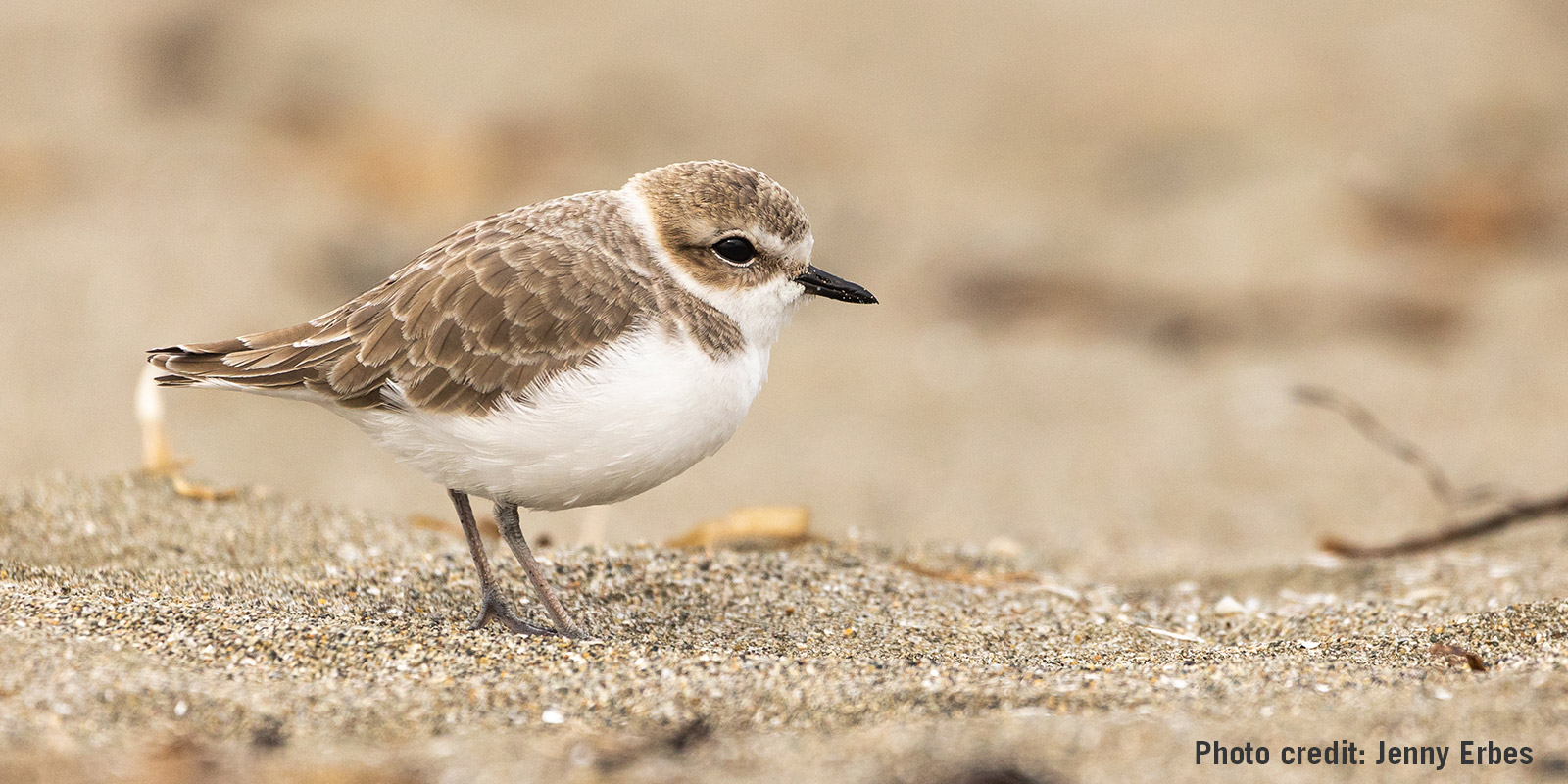Help protect the western snowy plover at Doran Regional Park
By Regional Parks staff
The western snowy plover is a small shoreline bird that nests at Doran Regional Park in Bodega Bay and other Sonoma Coast parks.
In 1993, due to its declining numbers and low reproductive success, western snowy plovers received a federal designation as a threatened species, so it's important for beach visitors to know how they can support this bird's survival.

Photo Credit: Jenny Erbes
Appearance, nesting and behavior
Adult plovers are about 6 inches long with a light-colored belly, darker patches on their shoulders and head and black patches above their forehead and behind their eyes.
Plovers may be seen in flocks, but pairs will pull away to nest. Their nests are camouflaged to look like the sand and are hard to spot. Eggs may be in a small depression of sand or have a few shells, rocks, kelp or driftwood around them.
Conserving energy is important for foraging for food, nesting and raising chicks. When startled by real or perceived threats, plovers may use precious energy trying to flee.
Their tendency to nest on the beach makes them particularly vulnerable to inclement weather, birds of prey, land-based predators, dogs off leash and human disturbance. If disturbed, plovers may abandon their nests altogether.
Chicks are raised from March through September. Males and females share egg incubation duties and will often perform a "broken wing" display to distract predators away from their nests.
During nesting season, Sonoma County Regional Parks erects signage and fencing near known nesting areas at Doran Beach. To give this bird a chance at successful breeding, it's important to respect fences and closure signs.
Ways to help the plover
- If you are lucky enough to spot one of these rare birds, give it a wide berth.
- Keep dogs on leash and away from fenced areas. Never allow dogs to chase birds. Due to their protected status, it's illegal to harass or harm plovers.
- Stay out and away from roped off habitat areas.
- Pack out or properly dispose of all garbage. Litter attracts predators like crows, ravens, skunks and gulls who are known to prey on plovers.
- Avoid flying kites near fenced habitat areas.
Your cooperation can help support the plover’s success. You can also help us restore and protect plover habitat by donating to the Natural Resources Fund of the Sonoma County Regional Parks Foundation.
Published February 2023



 Translate
Translate